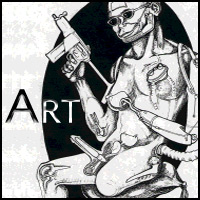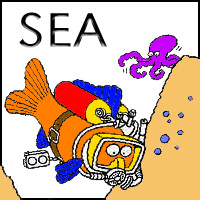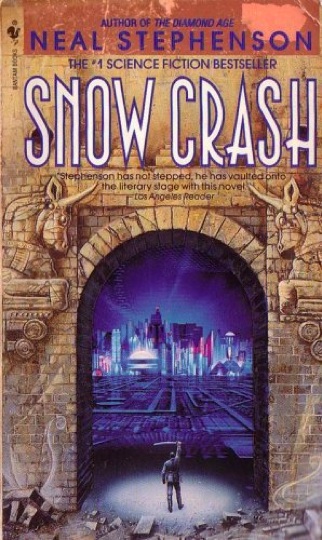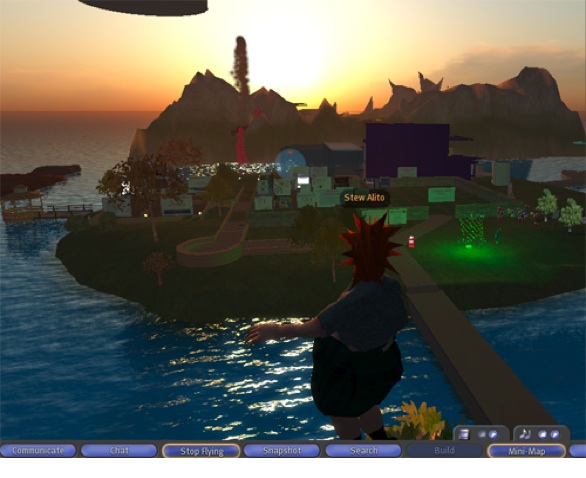
MMOG'sAlexander Simon The internet is perhaps the most ground breaking creation in communication and human interaction of the 20th century. As the internet continues to evolve and advance, so has its role in human-to-human and human-to-computer interaction. With the recent immense popularity of massively multiplayer online games, commonly referred to as MMOGs, the role of human and internet interaction is one that affects the daily lives of millions as countless hours are spent in these virtual reality worlds. The internet can be considered a form of cybernetic organism, it is a vast worldwide net of communication, constantly changing and evolving. Thus, the internet is almost “alive” due to the immense human interaction, such as the millions in MMOGS and other online virtual realities. Clearly, such online “games” are extremely cyborgian due to their immersive worlds and gameplay. Looking past the shallow misconception of human internet usage and MMO gaming as a simple interaction, it can be argued that the technological interface and display of a computer when used by a human mind and body is a cyborg interaction (connection between organic and inorganic material) as MMOGs requires specific technology but fundamentally they are still an extension of human communication and interaction. In most MMOGs the user will create an “Avatar” or virtual persona. The term Avatar literally means an “embodiment of divine,” and originates from the Sanskrit word “Avatara” which is roughly translated to spiritual incarnation. The creation of avatars is a display of a unique identity created specifically for the portrayal of an internet “body” of self and can be anything from a human that greatly resembles the user, to an Elven warrior, to even an animal or strange creature depending on the game. An avatar can be any representation of a person, including something as basic as a screen name on AOL or an individual profile. The pop culture origins of the use of the word “avatar” in cyber space is typically given credited to Neal Stephenson in his cyber punk novel Snow Crash which is credited to have largely influenced online communities, though the usage of the word in reference to online social networks is argued to have existed since the development of screen names. The origins of MMOGs date back to the early 1990's. The first truly graphic based massively online game was “Never Winter Nights,” hosted by AOL in 1991. Though there were several other MMOGs after the release of “Never Winter Nights,” many argue the genre didn't gain large scale recognition or popularity until the introduction of the original “Ultima Online” in 1997, and “Everquest” in 1999. Currently, there are more than 10 million players on "World of Warcraft” (today's most popular MMOG) alone, and countless more playing other MMOGs and virtual worlds. Perhaps the most cyborgian and influential virtual world today is the recent phenomenon of Linden Research Inc.'s "Second Life.” Though not technically a game since it is not objective based, Second Life, also known as SL, was created in 2003 as a worldwide, customizable virtual community. SL was greatly inspired by the "cyberpunk" movement (typically a science fiction genre, involving a future of advanced technology but focusing on the underworld of such a universe) and was an attempt to create an immersive digital world similar to the "Metavese" in the famous cyberpunk novel Snow Crash. Since its creation, SL has grown to the size of 20 million registered accounts; however, the actual number of active users is constantly debated as many claim this number is grossly inaccurate compared to the amount of people who are regular "residents" of the online community. The uniqueness of SL lies in its open ended customizability, in which the majority of interactible items, areas, and even person to person actions in the interface are all user created. Having such an alterable world opens the door for many users to create an actual "second life" in which they can own virtual land, vehicles, houses, etc. each of which they could have potentially designed completely on their own. While this virtual world is indeed artificial and exists all within the Linden Research Inc.'s servers, the effects on our actual physical world are very real, demonstrating the power and close ties these two alternate universes share, creating a cyborgian bond. The issue of online sexual relations is a constant debate in the world of SL. Though legally all users must be 18 or older to participate and become a resident of SL, a recent trend of “childlike” avatars have led to a series of pressing legal issues involving SL. Though arguments were made on what technically defines a child by appearance, the reoccurring problem of simulated virtual sexual relations between childlike avatars caused a great amount of turmoil amongst the SL community. The U.S and U.K both introduced laws because of this, giving virtual pornographic images of minors the same offense as child pornography, stating that no circumstances should permit the indulgence of pedophilic desires. While the U.S Supreme Court ultimately overruled the law, the issue still remains a hotly contested taboo regarding SL. Consequentially, the authenticity of potentially simulated pornographic images of seemingly young children, or "lolicon," is now the subject of great debate within the defense of child pornography related cases. On a similar note both Germany and Belgium are investigating SL for the exchange of child pornography , both virtual and real images. In response to all the legal issues Linden Research has declared that all users involved in such actions are to be immediately banned. Much like the parallel of SL sexuality affecting real world laws, SL thrives on a constantly changing economic system which closely reflects that of real world economics. The currency of SL is the “Linden Dollar” which, to the surprise of many, carries an actual real world value, as goods can be purchased using real world currencies as well as Linden dollars themselves. The SL economy is considered a free market, and residents can buy and sell goods and even services as they please through trade or various market places. Goods consist of almost anything from land, cars, and home decor, to clothes, custom avatar designs, etc. Services closely parallel the physical world such as working in virtual stores or performing “adult entertainment.” The average rate of the Linden dollar is around 260-320 Linden dollars to USD, as the rate fluctuates wildly, making it difficult to compare the strength of the USD to the LD. Several issues have come up regarding the economy of Second Life, which once again closely relate to the physical world, furthering the connection between the two. One of the bigger scandals involved gambling. Gambling machines created had no form of regulation and therefore could easily be set to either be impossible to win, or have certain tricks or backdoors. Some machines were even designed to recognize the original designer and always allow him or her to win. As of July 25, 2007 gambling has been discontinued by Linden Inc. admin due to the corrupt nature of virtual gambling and the reoccurrence of cheating. Another major issue is SL's currency and economy has no physical backing. While the Linden Dollar does carry economic value in the real world, unlike other world currencies such as the USD, Linden Research specifies in the terms of service that the Linden Dollar carries no intrinsic value as a currency, and therefore as stated by Linden Research is valueless. The Linden Dollar is still ultimately something that can be created easily by Linden Research, and consequentially relies on the faith of residents in the system, leaving the overall economy of SL in a state of constant fear of collapse. Religious groups, foreign consulates, and even well-established Universities have begun using Second Life to gain popularity and give out information about their organizations. The Oklahoma based, Christian, “Lifechuch.tv” and Egypt based, Muslim, “Islam Online” are two examples of religious groups that have begun to use Second Life as a form of promotion and even practice of their religious beliefs. Islam Online users can even perform Salah, or daily prayers, while in SL at Islam Online's SL area. Similarly, Maldives, Sweden, and Estonia have all created virtual embassies to answer questions of potential travelers such as visa or currency information and to promote national image and culture. Following this trend, Malta, Macedonia and the Philippines are planning on opening embassies as well. Following this trend is the rapid expansion of educational facilities on SL. Currently more than thirty universities, many of which own large amounts of private SL land for university purposes, have offered virtual classes on SL for specific courses. Furthermore, SL has been used to create a large online database for libraries (in the “Info Islands”) as well as a center for foreign language study such as English (for non-English speakers) through the “British Council” and Spanish through the “Instituto Cervantes” Though I have only begun to scratch the surface of the depth of the world of MMOGs and virtual worlds such as Second Life, it is clear that the technological components of the computer and internet, when used by a human mind and body to interact with such virtual worlds, is a cyborg interaction. Even the very worlds of Second Life and other MMOGs can be seen as Cybernetic Organisms, as all of them interact and directly affect the physical, organic world we inhabit and know as the “real” world.
Works Cited
"Diplomacy Island." Diplomacy Island. Diplo Foundation. 4 Mar. 2008 http://www.diplomacy.edu/DiplomacyIsland/default.asp.
|















